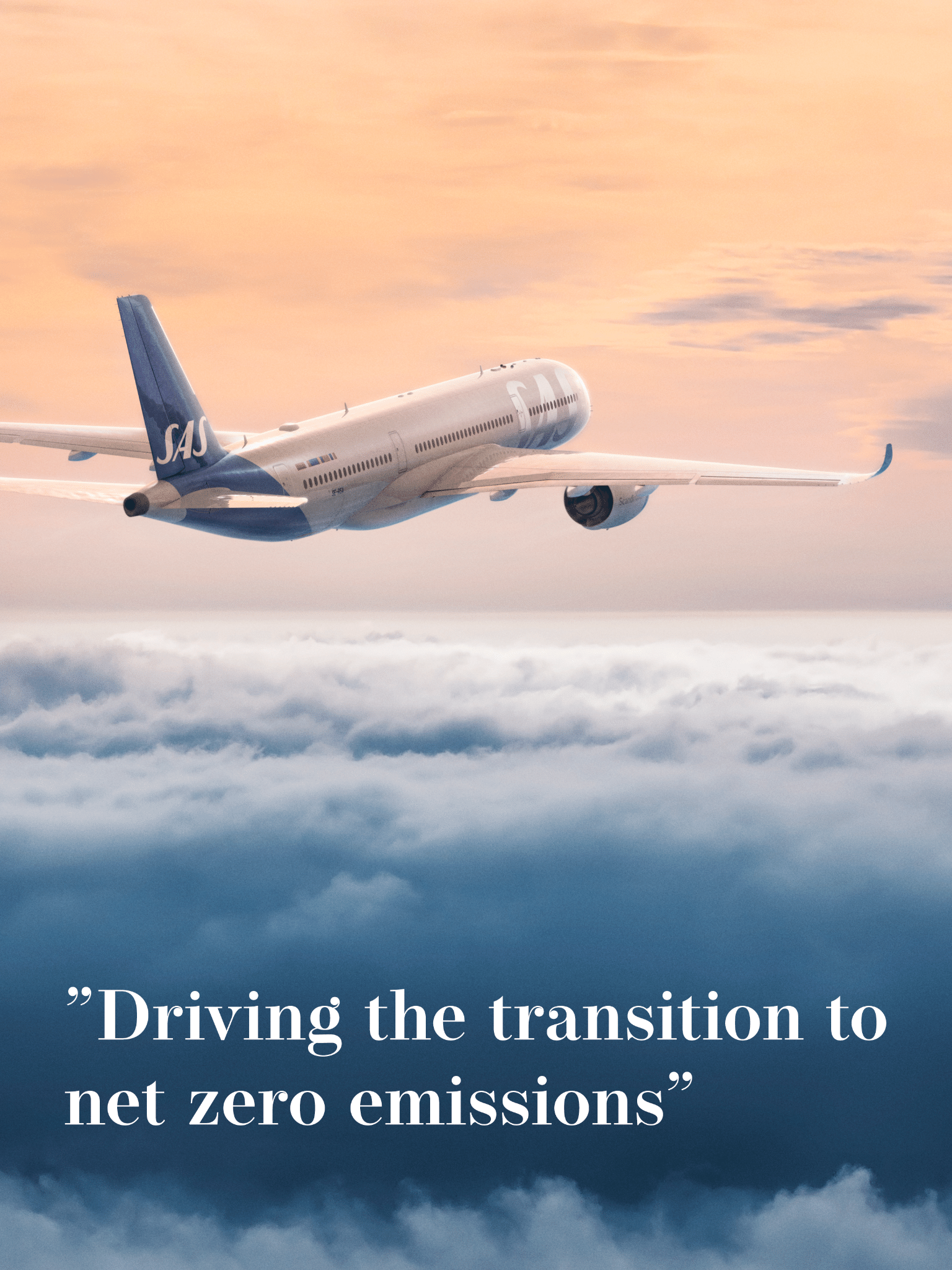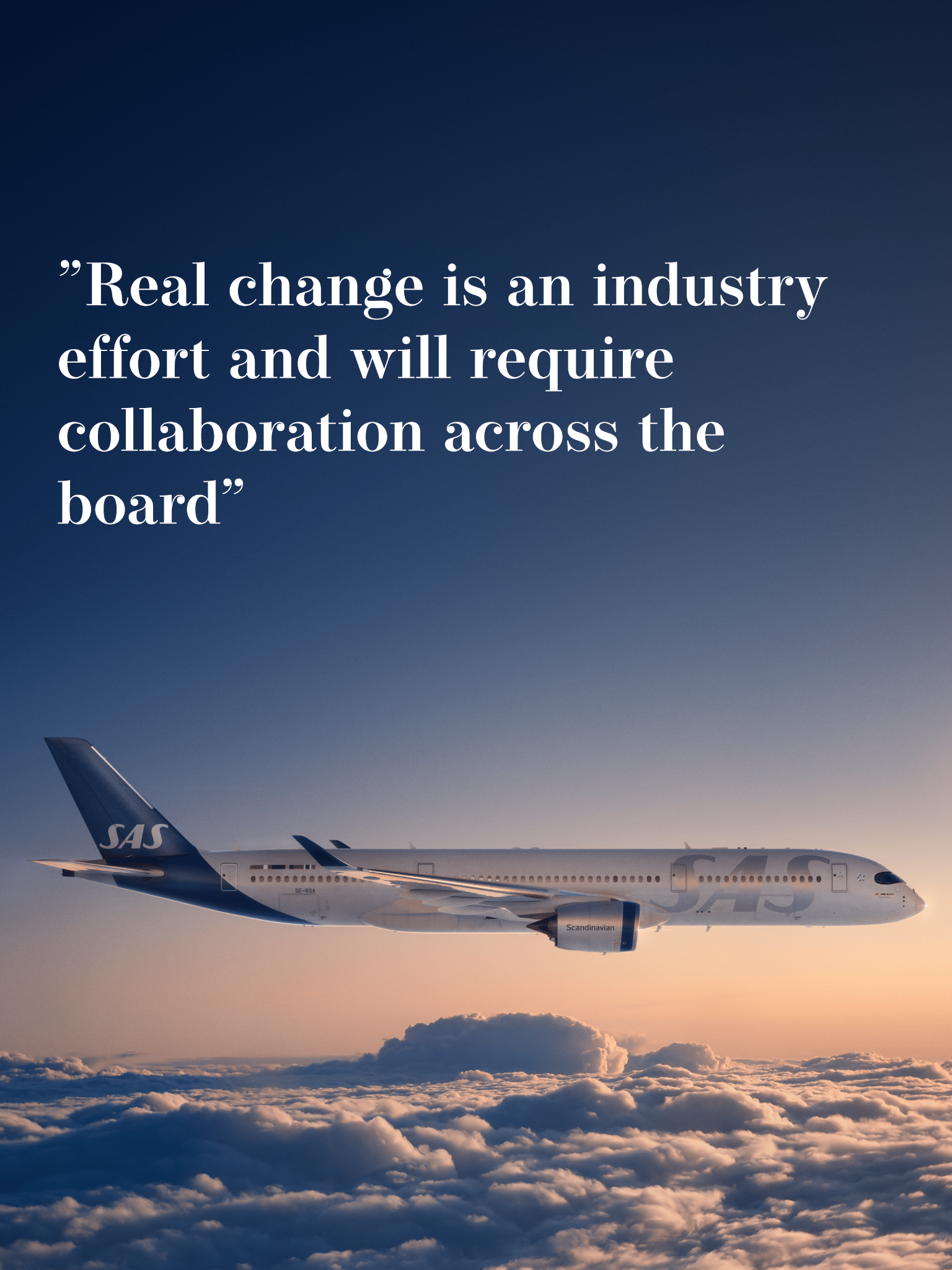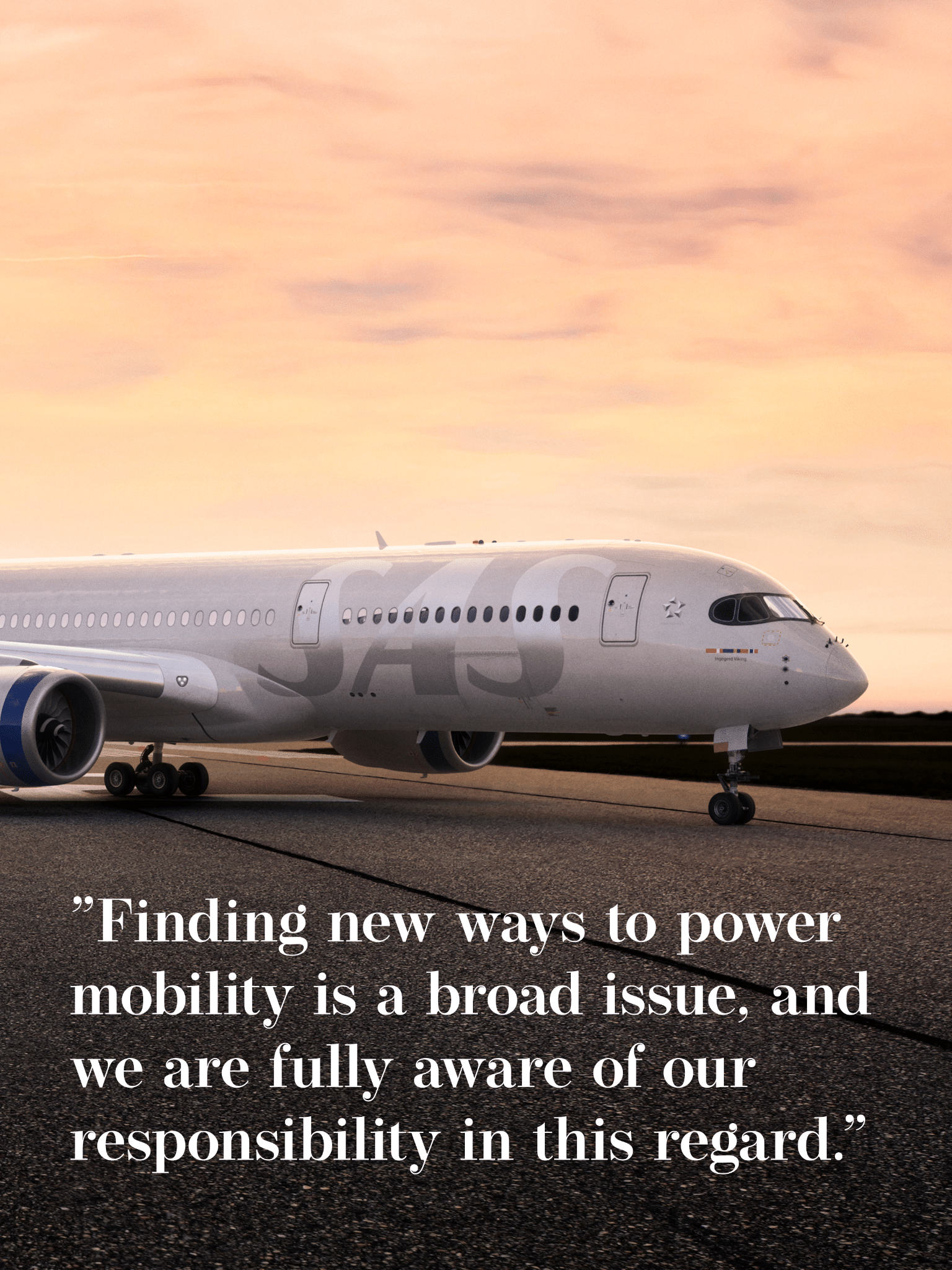How do you plan on achieveing sustainable aviation?
SAS support IATA's vision that by 2050, it will be possible to fly commercially without climate impact, so we're taking a holistic approach and making every change we can. The airline industry represents 3% of the global CO2 emissions.
The majority of this comes from the operations. We are therefore focused on renewing our fleet to more energy efficient aircraft types, and increasing our use of Sustainable Aviation Fuel.
Today's Sustainable Aviation Fuel is primarily made from used cooking oil. It has many benefits, including reducing emissions with up to 80% over its lifecycle.
Where do you see the biggest challenges?
Access to Sustainable Aviation Fuel. Our engines are certified to fly with up to 50% SAF.
but there is limited availability. This is why we have partnered up with Gevo, Neste, and others to produce SAF for us.
We expect synthetic SAF to become more readily available in the future, which will accelerate the transition.
Real change is an industry effort and will require collaboration across the board.
The most exciting move SAS is making towards sustainability?
We support the Swedish company Heart Aerospace in their development of electric aircraft, which has the potential of being a significant step towards zero-emissions.
Looking to the future, we are also workingclosely with Airbus Industrie investigating solutions with hybrid, hydrogen and electric aircraft.
Air travel is frequently criticized for its environmental impact. Finding new ways to power mobility is a broad issue, and we are
fully aware of our responsibility in this regard.




